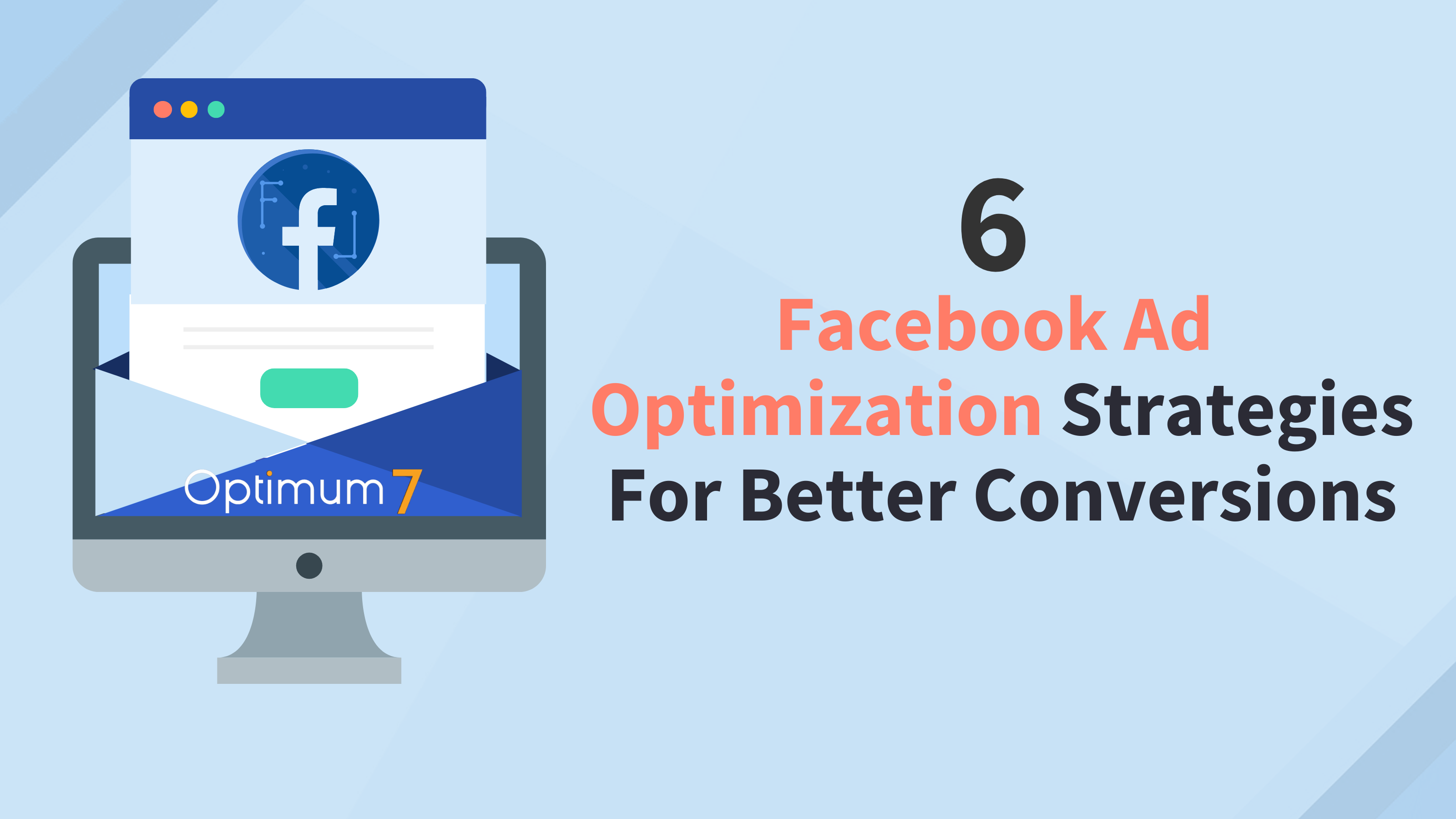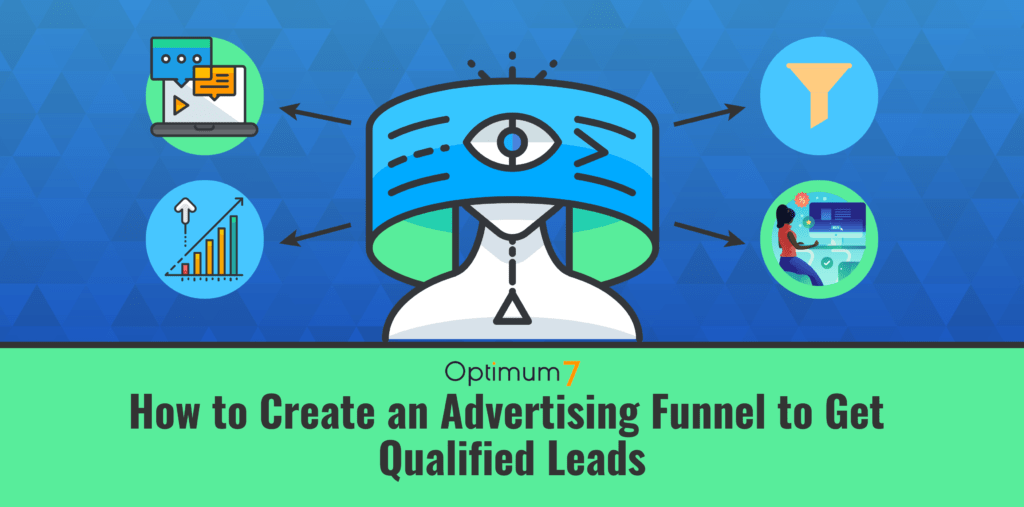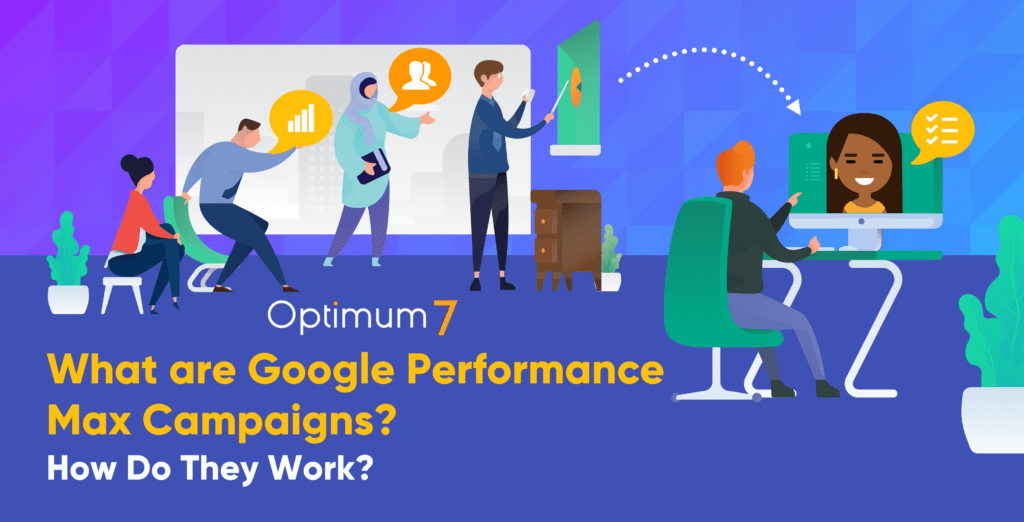With over two billion monthly active users, Facebook is one of the largest social media platforms in the world with the highest number of active social media users. It’s also one of the most popular sites for online shopping, with an estimation that 70% of shoppers use Facebook to discover new products.
This makes it an ideal place to reach out to potential customers with your ads, and a valuable channel for any brands considering omnichannel eCommerce for their business. But these ads need to be optimized if you want to get the most efficiency out of your ad budget.
Without having proper guidance, Facebook ad optimization can be a daunting process. This post will teach you how to optimize Facebook ads so you get more bang for your buck.
1. Understand Your Key Success Metrics For Your Facebook Ad Campaigns
Facebook ads manager offers an incredible amount of analytics data and capabilities. This much data however can be confusing and hard to process. That’s why you have to pick and choose your success metrics.
Your success metrics should align with your campaign objectives. If you’re looking to increase brand awareness, for example, you might track measures such as social media engagement or website traffic. If your goal is to increase conversions, on the other hand, you’ll want to focus on metrics such as click-through rate or lead generation.
By clearly identifying your objectives, you can ensure that your success metrics are providing valuable insights into your business performance. Additionally, it’s important to regularly review your success metrics and make adjustments as needed.
As your business objectives change over time, so should your metric of success.
Depending on your objective you will have to analyze and track different key metrics:
For Engagement:
Engagement Rate
Engagement is one of the most important metrics for social media success. A high level of engagement indicates that your audience is invested in your content and finds it valuable.
This, in turn, can lead to more exposure for your posts, as engaged users are more likely to share your content with their followers. In addition, engagement is a key factor in algorithm decisions made by social media platforms. Posts with high engagement levels are more likely to be shown in users’ feeds, while those with low engagement levels may be less visible.
Facebook’s algorithm is designed to promote content that is engaging to users.
Content with a high engagement rate is more likely to be served to more people. The algorithm takes into account factors such as the number of likes, comments, and shares.
If the algorithm determines that a piece of content is receiving positive feedback, it is more likely to be served to more people. This helps to ensure that users are seeing content that they are interested in and that they are likely to engage with.
As a result, Facebook favors content with a high engagement rate.
Views
Facebook’s decision to consider a video “viewed” if it is watched for three seconds or more provides advertisers with valuable information about their audience’s viewing habits. This change is significant because it allows advertisers to better assess how effective their video content is and make necessary adjustments.
For example, if an advertiser notices that their 30-second videos are only being watched for an average of 10 seconds, they may need to adjust the length or messaging of their videos.
Ultimately, this change allows advertisers to produce more relevant and effective video content for their audiences.
For Brand Awareness:
Frequency
In advertising, frequency is defined as the number of times your target audience sees your ad.
The general thinking is that the more times people see your ad, the more likely they are to remember your product or brand. However, there is such a thing as too much of a good thing. If you show your ad too many times, people may start to tune it out.
This situation is called ad fatigue.
This is especially true for small audiences like past website visitors. If you notice that your frequency is going up but your engagement is going down, it may be time to rotate your creatives.
This will give people a chance to see something new and refreshing, and it may help to reignite their interest in your product or brand.
Reach
Reach is an important metric to determine how many unique users viewed your ad. This number will increase as you progress through the different stages of a campaign.
Ad Recall
Ad recall is a measure of how well your ads are resonating with your audience. Facebook looks at user behavior and polls to determine whether people remember seeing your ad. For example, you might be asked whether you remember seeing a certain ad. This information is used in the ad recall metrics.
Follow this metric to see if your creatives are resonating with your audience.
Ad recall can be a useful metric for evaluating the effectiveness of your ads. If people don’t recall seeing your ad, it’s likely that it wasn’t effective in reaching its target audience.
On the other hand, if people do recall seeing your ad, it’s likely that they found it interesting or relevant. Either way, ad recall can give you insights into how well your ads are performing.
So if you’re interested in evaluating the effectiveness of your ads, keep an eye on your ad recall metrics. Facebook provides a variety of tools that you can use to track this metric, so take advantage of them to see how well your ads are performing.
For Conversions (Form Completions, Leads, & Purchases):
Return on Ad Spend
Return on Ad Spend (ROAS) is a metric that measures the profitability of an advertising campaign. To calculate ROAS, you divide the revenue generated from the campaign by the amount spent on advertising.
For example, if you spend $100 on ads and generate $500 in sales, your ROAS would be 5. This metric is useful for evaluating the effectiveness of an advertising campaign and determining whether it is worth continuing. However, it is important to keep in mind that ROAS can vary depending on the products or services being sold and the target audience.
Therefore, it is important to compare ROAS across multiple campaigns to get an accurate picture of campaign effectiveness. With this information, you can make informed decisions about where to allocate your marketing budget for maximum return on investment.
Cost Per Action
Cost Per Action (CPA) is a measure of the amount of advertising spend it takes to drive a specific action. This could be anything from a sign-up to a lead or purchase, or an app install. Typically, the lower the cost per action, the more efficient the advertising spend. For this reason, CPA is an important metric to track when planning and running advertising campaigns.
To calculate CPA, simply divide the total ad spend by the number of actions achieved. For example, if you spend $100 on ads and generate 10 sign-ups, your CPA would be $10.
This metric can then be used to compare different campaigns or ad types to see which are generating the most leads or sales at the lowest cost. When used effectively, CPA can be a powerful metric for optimizing advertising budgets and driving better results.
Conversion Rate
Conversion rate is a key metric for determining the success of your Facebook campaigns. It measures the percentage of website visitors that take an action, such as making a purchase or signing up for a newsletter.
A high conversion rate indicates that your campaigns are effectively driving traffic to your website and that your website is able to convert that traffic into customers or leads. Conversely, a low conversion rate may indicate that your campaigns are not targeted enough to reach your target audience, or that your website is not effective at converting visitors into customers or leads.
By tracking your conversion rate, you can adjust your campaigns and website accordingly to optimize for conversions and generate more revenue.
Average Order Value
As an eCommerce business scales on Facebook and Instagram, Average Order Value becomes an increasingly important metric to watch. This number indicates the average revenue that a customer brings in, and can be a useful indicator of success.
There are a few different ways to increase the average order value. One is to offer discounts or free shipping for larger orders. Another is to upsell customers on complementary products. For example, if a customer is buying a dress, you might suggest they add a pair of earrings to their order.
You can learn how to increase the average order value of your store by reading our “How to Increase Average Order Volume of Your eCommerce Store” article.
For Website Traffic:
Cost-Per-Click (CPC)
CPC, or cost-per-link-click, is a crucial metric for any website owner to track. It represents the amount you’re paying to drive traffic to your site, and it’s important to make sure you’re not overspending.
If you’re seeing a rise in CPC without a corresponding increase in conversions, it’s an indication that you may be sending the wrong type of traffic to your site. This can be caused by a number of factors, including poor targeting, ineffective ad copy, or low-quality traffic.
By tracking your CPC data, you can gain valuable insights into the effectiveness of your traffic sources and make necessary adjustments to ensure you’re getting the most out of your marketing efforts.
Click-Through Rate (CTR)
Click-through rate (CTR) is a key metric to track when measuring the success of your online advertising campaign. CTR represents the number of clicks your ad receives divided by the number of times it is shown, or impressions.
While overall CTR can be a useful metric, it is important to track link CTR if your goal is to drive conversions on your website or app. Link CTR measures the number of clicks on your ad that results in a click-through to your website or app.
This metric provides a more accurate measure of your audience’s interest in your ad messaging and creatives. If you are targeting your audience with relevant messaging, your link CTR should be higher. Tracking link CTR can help you to optimize your ad campaign for more successful conversion rates.
2. Keep Your Ads on Rotation to Maintain a Low Ad Fatigue
Rotating your ads and maintaining optimal ad frequency with proper ad placements positively affects the CTR and CPC of your Facebook Ad Campaigns.
A high CTR not only helps to ensure that your ad is being seen by as many people as possible, but it also helps to keep your costs low. That’s why it’s important to rotate your ads frequently and to maintain an optimal ad frequency.
By showing your target audience a variety of ads, you can keep them engaged and prevent them from getting bored. And by keeping your ads fresh, you’ll be more likely to catch their attention when they see your ad for the fourth time or more. As a result, you’ll see a lower CPC and a higher CTR.
So how do you rotate your ads and keep the ad fatigue low?
You can keep the ad fatigue low by creating multiple ad sets with different designs that will keep your audience engaged. A well-planned ad campaign will feature multiple ad sets that are scheduled to run on different days of the week.
By rotating your ads, you can avoid the risk of your audience seeing the same ad creative multiple times and becoming bored or annoyed with your campaign. This strategy is particularly effective when running campaigns with small audiences, such as remarketing campaigns.
In these cases, it is especially important to avoid showing the same ad too often. By scheduling your ad sets to run on different days, you can ensure that your audience will see a variety of ads and keep them engaged with your campaign.
3. A/B Test Regularly to See Your Best Performing Ads
A/B testing can be an extremely useful tool for marketers who want to improve their ads. By pitting two or more ads against each other, you can learn which factors are most important to the success of an ad.
A/B testing can help marketers improve the delivery schedule, design, and audience targeting of their ads. In fact, A/B testing that leads to improved UX (user experience) design could result in a 400% increase in conversion rates and help you find the best-performing ad creatives.
But rotating active ads before actually collecting any valuable data is a common mistake among marketers.
Ads need time to perform.
Marketers should wait until an ad has been running for at least a week before making any changes.
This gives the ad time to collect data and allows you to see which version of the ad is actually performing better.
When on a budget, though, A/B testing can get a little frustrating. Unfortunately, there is no way around it if you want to efficiently split test your ads to see the best performing one.
4. Retargeting, Retargeting, and Retargeting
Any experienced marketer knows this.
The vast majority of customers who visit a website for the first time are not yet ready to make a purchase.
This might sound discouraging, but it doesn’t mean that these consumers are lost forever.
Instead, you can use retargeting with your Facebook ads to re-engage them when they’re finally ready to buy.
Retargeting is a powerful marketing tool that allows you to show ads to users who have already shown an interest in your product or service. For example, if someone visits your website but doesn’t purchase anything, you can use retargeting to show them ads when they’re browsing other websites.
This reminds them of your product and encourages them to come back to your site and complete their purchase.
If you’re not using retargeting as part of your digital marketing strategy, you’re missing out on a valuable opportunity to increase conversions and boost sales. Retargeting is an effective way to reach prospective customers who have already shown an interest in your products or services.
Install Facebook pixel on your website to fine-tune your retargeting. Facebook pixel helps you track your website visitors more efficiently and increase the accuracy of your retargeting.
5. Your Ad Creative is the First Thing You Should Optimize
Your ad creative doesn’t have to be a work of art. But there are some key elements you should focus on to make sure your ads perform the best. A simple design that delivers the message and focuses on the right elements can get the job done.
These elements are:
Branding
Your brand should be at the front and center of everything you do. This includes a focus on logo/color scheme so that people are more likely to remember your brand.
Raising brand awareness is a whole different story but by doing this you also work on your brand awareness as well.
Mobile-First
Your Facebook Ads should be designed with mobile users in mind. More than 89% of Facebook users use mobile devices exclusively.
The mobile-first approach will give you better results as your ads won’t be confusing for the majority of users.
Focal Point
Have a clear message and focal point when using images. Product-focused creative drives business results more efficiently, with more content views versus creatives without a clear product focus.
Keep the Text Light
When creating an ad, it’s important to strike the right balance between the visual and text. An effective ad will have an eye-catching visual that speaks for itself, with minimal text that elaborates on the message of the image.
Crowding the image with too much text can be off-putting to potential customers, and can make it difficult to understand the message of the ad. Keep it simple – let the visual do the talking, and use the text to complement the message.
In this way, you’ll create an ad that is both visually appealing and easy to understand.
6. Structure Your Ads By Audience Type
When planning a marketing campaign, it’s important to consider your target audience carefully. Trying to appeal to everyone is often not the most effective approach.
Instead, it can be helpful to divide your audience into different groups and then tailor your budget and creative to suit each group’s needs and interests by creating lookalike audiences.
This approach can make your campaigns much easier to analyze, as you will have a different goal for each group.
For example, you might focus on brand awareness for one group and lead generation for another. By taking the time to understand your audience and craft targeted campaigns, you can maximize your chances of success.
Maximize the Efficiency of Your Facebook Ad Campaign
Optimizing and competing among other Facebook ads is not an easy task.
While it’s not an easy process, it is certainly worth investing the time and effort since Facebook ads are still one of the best ways to reach new customers. By following the optimization strategies in this guide, you can make sure your Facebook ad campaigns are as effective as possible.
Now that you know how to optimize your Facebook ads, it’s time to put these tips into practice. If you need help getting started, contact our team of experts today.




